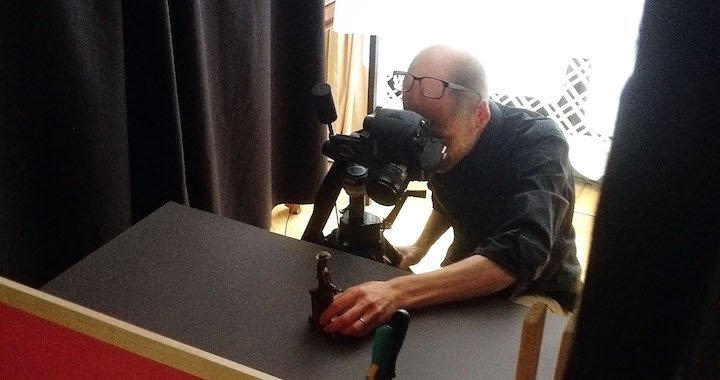
Food for Thought
A Quick Conversation with Finnish artist Henrik Duncker
28/02/2017
Have you ever thought about what kind of gifts government officials present to foreign guests, or when going on diplomatic visits – what do they give out as a representation of their country? In the western Latvian city of Liepāja, Finnish artist Henrik Duncker’s photography exhibition “Gifts of Protocol” is showing at the Liepāja Museum through 5 March. The photographs feature diplomatic gifts that have been presented at state, official, and work-related events in Latvia and elsewhere.
The idea for the project arose when Anna Volkova, who is closely tied to the group “Orbīta”, invited Duncker to create a series of pictures of diplomatic gifts for the “Orbīta” publication Talka. In the exhibition’s catalog, Vladimirs Svetlovs, one of the artists of “Orbīta”, writes: “The giving of gifts is an ancient ritual, and today’s mutation of it indicates the changes that have occurred in our civilization and culture. The exchanging of valuable objects is, perhaps, a candid and naive attempt by governmental representatives, institutions, and the people to start up a conversation, an attempt to create personified and close interpersonal relationships. […] In the images of these gifts by the elite, one can clearly sense Henrik’s consistently humorous take, which this time is being directed at the state’s image in the context of a chaotic Europe. An all at a time when Finland is already celebrating its centenerary, but Latvia is still just preparing for its celebration of the same milestone.”
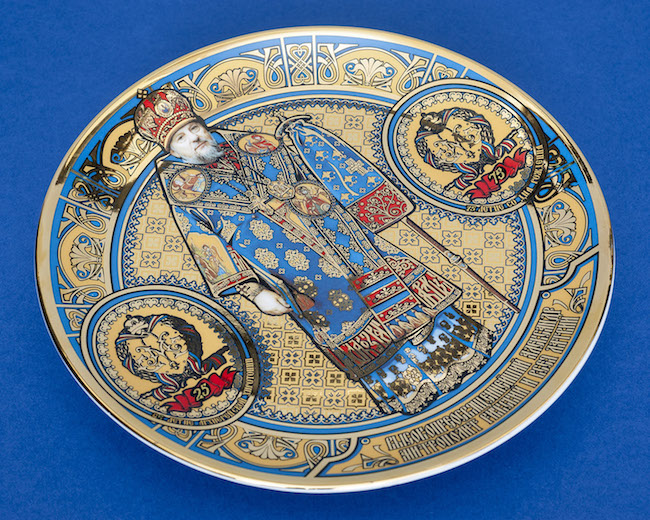
A gift from Alexander, Metropolitan of Riga and all Latvia. Latvia, undated. Located in the Cabinet of Ministers of the Republic of Latvia
Since 2012, Duncker uses a special method when taking photographs – he works in his self-made studio, which is a fragile wooden structure consisting of a wooden frame and black and white sheets. He uses only natural sunlight in the studio, so it is the rising and setting of the sun that dictate his workday schedule. This is the method he used to create the photographs in the series “Gifts of Protocol”.
Duncker’s photographs have been published in the newspapers The Independent, The Sunday, Telegraph, The New York Times, Wired, Rīgas Laiks, and others. His works can be found in the collections of the Kiasma contemporary art museum in Helsinki and the Moderna Museet in Stockholm, as well as in the Finnish Museum of Photography. Duncker’s most notable exhibitions have been “If Nokia Were a Place” (2007) and “Hay On the Highway”, which received the European Photography Award in 1993. Since 2002, Duncker has occasionally turned to Latvia-related themes, with such series as “Relating Latvia” (2008) and “Studio Kapsēde (2012 - ongoing).
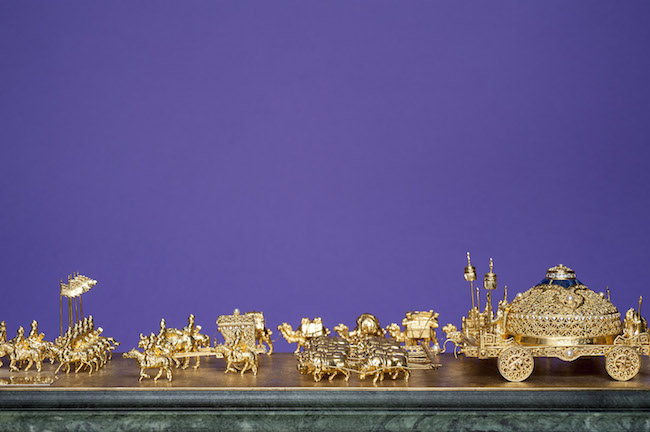
A gift from Tsakhiagiin Elbegdorj, President of Mongolia. 12 June 2014, Mongolia (during an official visit). The gift is now located in the Chancellery of the President of Latvia
The group “Orbīta” [Orbita] invited you to photograph the protocol gifts from the Latvian state collections. Could you please tell us more about your collaboration with Orbita on this project?
My first encounter with Orbita was when they performed in Helsinki; I think it was in 2012. They lent me a film camera asking me to take a few pictures of their performance, which was their second act in Helsinki at the time – a peculiar midday gig at the embassy, standing on antique parquet and surrounded by satin drapery. A very enjoyable performance, nevertheless. We exchanged books: I gave my “Survival Handbook”, which had been published by Laikmetīgās Mākslas Centrs in 2009.
Apparently, the poets liked some of my pictures: In autumn 2013, when my “Studio Kapsēde” exhibition opened at the Kalnciema Kvartāla Galerija, I was glad to see that Vladimir Svetlov from Orbita had come to the opening party.
Nearly one more year passed, and Anna Volkova and Vladimir contacted me, asking if I'd like to shoot a series of protocol gifts for Orbita's forthcoming Talka yearbook. Apparently, they had felt that my recently developed way of photographing objects against candy-colored backdrops would be an ideal fit for this project. Of course, I was interested. I had started this process, called "Studio Kapsēde", by photographing various peoples' personal objects, mainly in Kapsēde and its surroundings. In 2013 The Riga Porcelain Museum had first invited me to take pictures of their collections, and a bit later, to plan and execute the figurine exhibition installation at the museum. So for me, it was natural to continue on with a new collaboration. I like to think of "Studio Kapsēde" as a platform of activities that can involve many people, not only as a photo series that I have created alone.
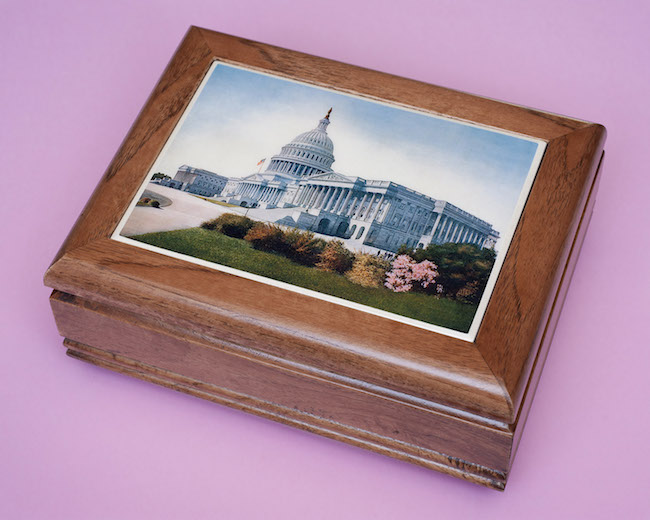
A gift from a US senator (name not known). Riga, 20 April 2011. The gift is now located in the Republic of Latvia Parliament “Saeima” Building.
So, it was the summer of 2014. Vladimir Svetlov took care of the pre-arrangements such as scheduling, permits, etc. He also assisted me in the actual photography process, and Anna Volkova would also swing by each location. We photographed in the Parliament Building, in the Cabinet of Ministers, and in the President's Chancellery (which at the time was temporarily located in the House of the Blackheads). I do not own any studio equipment – lighting and such – so I had designed and constructed a collapsible wooden frame that I use together with thick black and translucent white cloth as a natural light studio. With the fabrics, I can regulate the amount, direction and quality of the light. So, at each location we built this studio tent (or pavilion, as Vladimir calls it) inside the room. This may not make the actual set-up slower than with conventional studio equipment, but it surely does result in long, even very long, exposure times. The worst situation was in the House of the Blackheads: the room we were given had just one window with darkened glass, similar to what some drivers have as their car's side windows. And as if this was not bad enough, the sky turned pitch dark and it started pouring rain. So, there we were, sweating in near darkness; I was barely able to focus the camera, making very long exposures, and Vladimir was carrying in coffee and cherry pies. It was great!
The series was published in Talka, at the end of 2014. We thought it'd be nice to show the series in Riga some day, but no further plans emerged. In 2015 I made an agreement with the Liepāja Museum about two exhibitions: “Studio Kapsēde” would be shown in February 2016, and "Dāvanas pēc protokola" (“Gifts of Protocol”) in February 2017. I already had previous experience with two touring exhibitions in Finland. So I thought, if I'm going to put all of this effort into making "Gifts" into a proper exhibition with framed photographs, why not make it into a touring exhibition? This time it was my turn to make a proposal to Orbita: Since autumn 2016, Vladimir Svetlov has been managing the tour arrangements, and this will travel throughout Latvia for at least a year, lasting all the way into 2018, which will be Latvia's centenary.
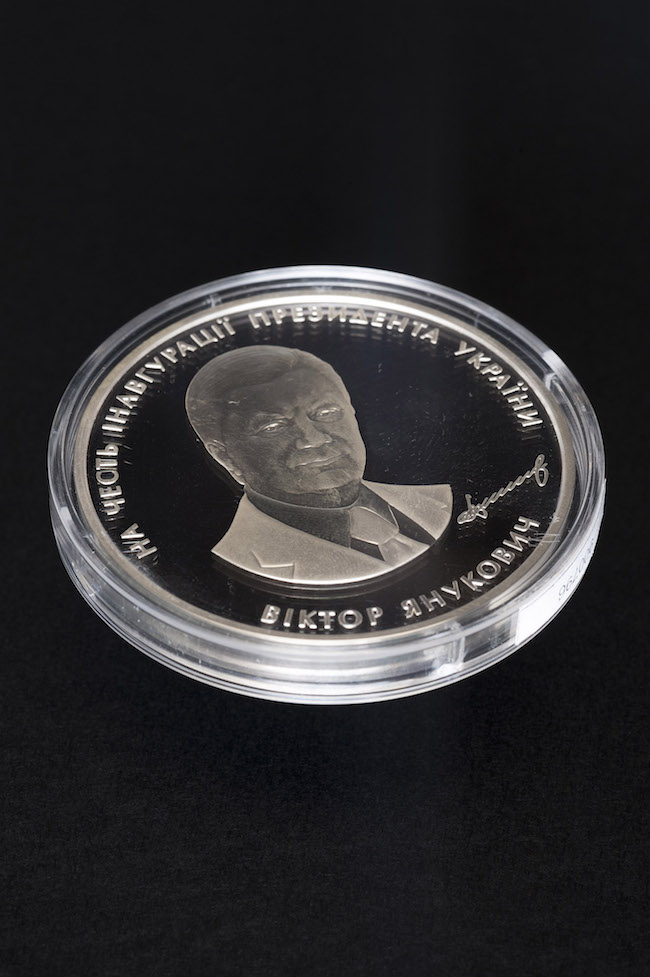
A gift from Ukrainian President V. F. Yanukovych. Ukraine, 15 March 2013. The gift is now located in the Republic of Latvia Parliament “Saeima” Building
What is the main message behind the project "Gifts of Protocol"?
This is fairly straightforward photography, documentary…or studio documentary, that's how I see it. It is about reflecting our times, making observations and choices, and sharing them with other people and thus serving food for thought. In this exhibition, the viewer can find a seemingly precious handcrafted item, as well as an inexpensive, awkwardly glued composite. You can compare, side by side, a present from a full democracy with one from an authoritarian regime. You can contemplate what each gift tells about the giver – and if an ideal gift says something about the receiver, too. And so on. The number of protocol gifts is large and growing, and once received, for practical reasons, most of the objects stay in storage – without much further purpose. The project is a look into the complementary recognition of Latvia within the international community, an outlook into the network of connections that reaches both towards the West and towards the East. The exhibition makes it possible to present this view to many Latvians.
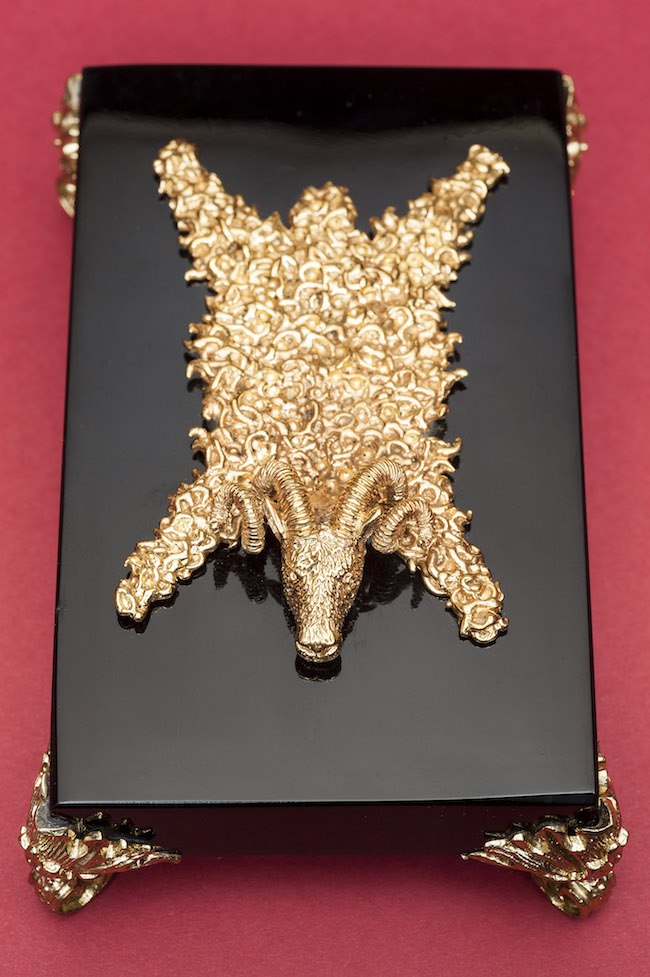
A gift from David Usupashvili, Chairman of the Parliament of Georgia. Tbilisi, 1 April 2014. The gift is now located in the Republic of Latvia Parliament “Saeima” Building
Did you come across any surprises while working on it?
The world is packed with surprising things. I guess I've always been curious about many types of objects, and there is no denying that one motivation for my photography is that of a collector's. I just don't have the money nor the storage space to be a proper collector (of objects). Another thing: I have often tight-roped between so-called good taste and kitsch. I tend to look for the sublime in the mundane and the vulgar, and I often find an amusing side in the high-class and the pompous. So, obviously, when working on such a tempting project, there are many moments of marveling.
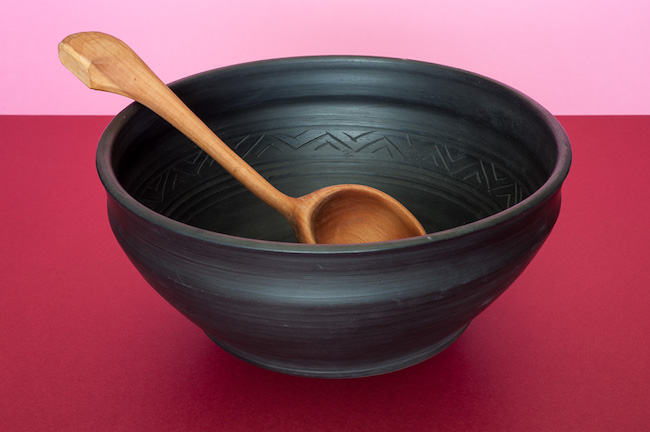
A gift from Inete Ielīte, Chairperson of the Board for “The Coalition for Gender Equality in Latvia”, presented to Latvia’s Prime Minister, Valdis Dombrovskis, on 8 March 2011, Latvia. The gift is now located in the Cabinet of Ministers of the Republic of Latvia
Which is your favorite protocol gift from those you have seen?
If I must choose one…it’s one that didn't come from another state: it's the black ceramic bowl from Latgale, presented to Prime Minister Valdis Dombrovskis by The Coalition for Gender Equality of Latvia.
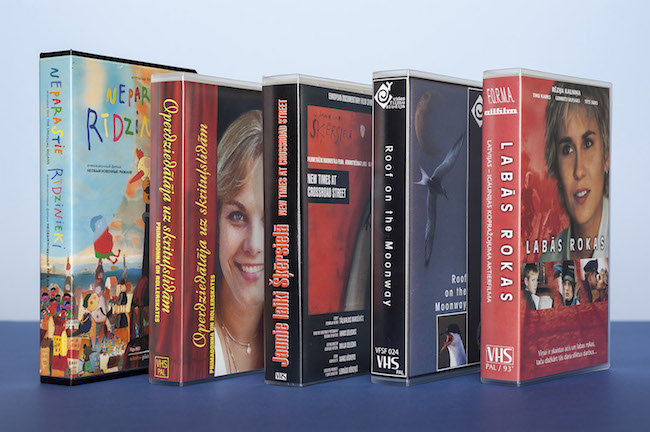
A gift from the Latvian Filmmakers Union. 9 December 2002, Latvia. The gift is now located in the Cabinet of Ministers of the Republic of Latvia
Are you going to expand the project by taking pictures of protocol gifts of other countries' collections as well?
Yes, I have that in mind.
Quite a few of your series are related to Latvia. Have you noticed anything particular in the local culture that you would describe as being very special?
First, there is the singing; the amount of stories and playfulness in songs. Right now, as I am installing the exhibition at the museum, someone is always singing in the office down the corridor. When we have a birthday party in Finland, and it's time for the compulsory birthday song, the mostly off-key singing is somewhat awkward to listen to. But here in Latvia, people somehow naturally seem to flow together with one another when singing. Unfortunately, the same does not apply to driving. A couple of days ago, I almost got crushed (and this was not the first time) by a heavy truck that was speeding straight at me on my side of the road. It was overtaking two other long trucks, completely ignoring the fact that overtaking was prohibited on that length of road. Now, these two observations may not be easy to photograph, but one can confirm them by looking at statistics on traffic accidents, and the numbers on choir commitment rates.
Henriks Dunkers. Tuberosa
I’ve heard that in Finland, people joke about Latvians and their love of potatoes. Do you have anything to say about Latvians and potatoes?
Yes, I have made a short film about Latvian potatoes.